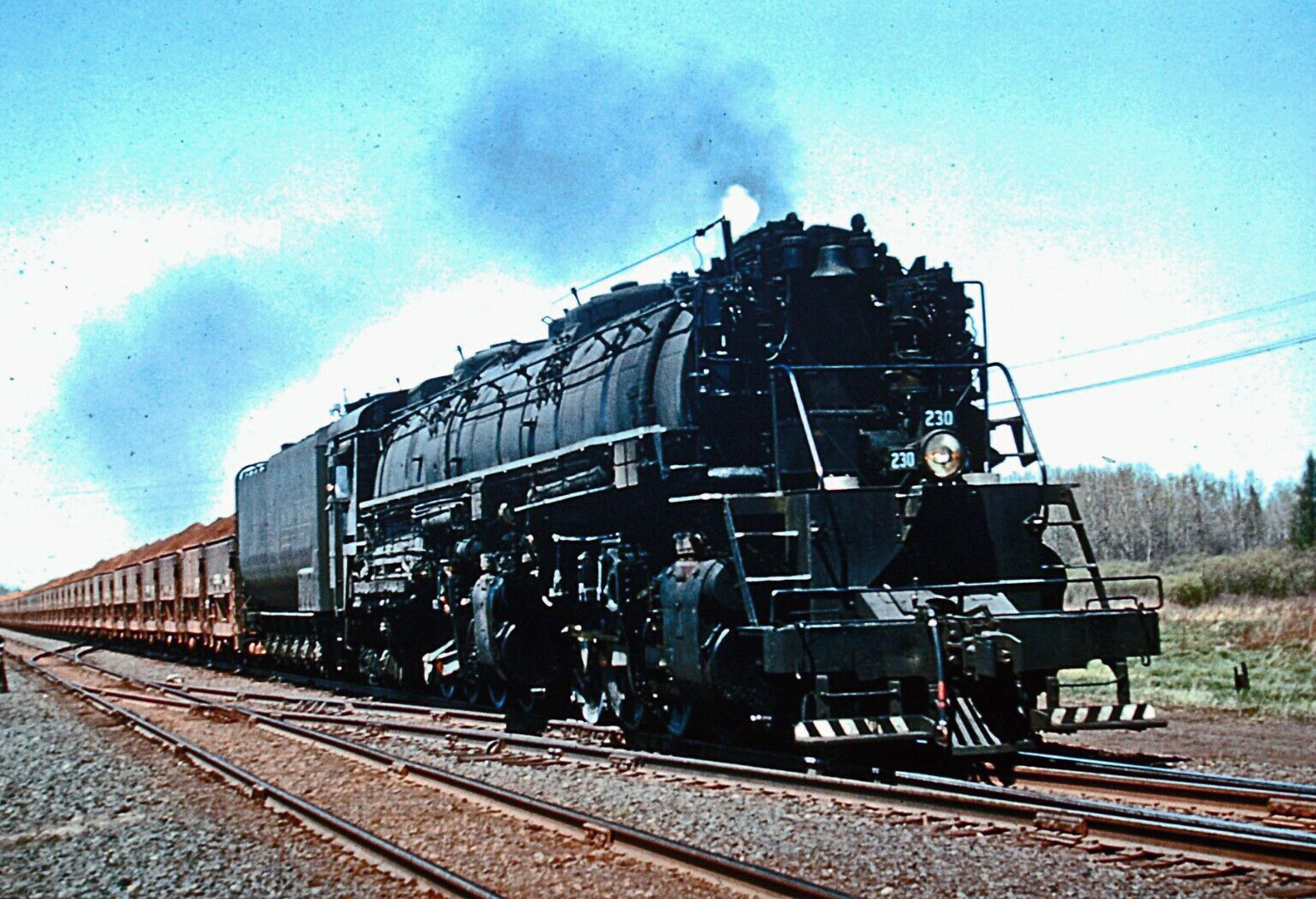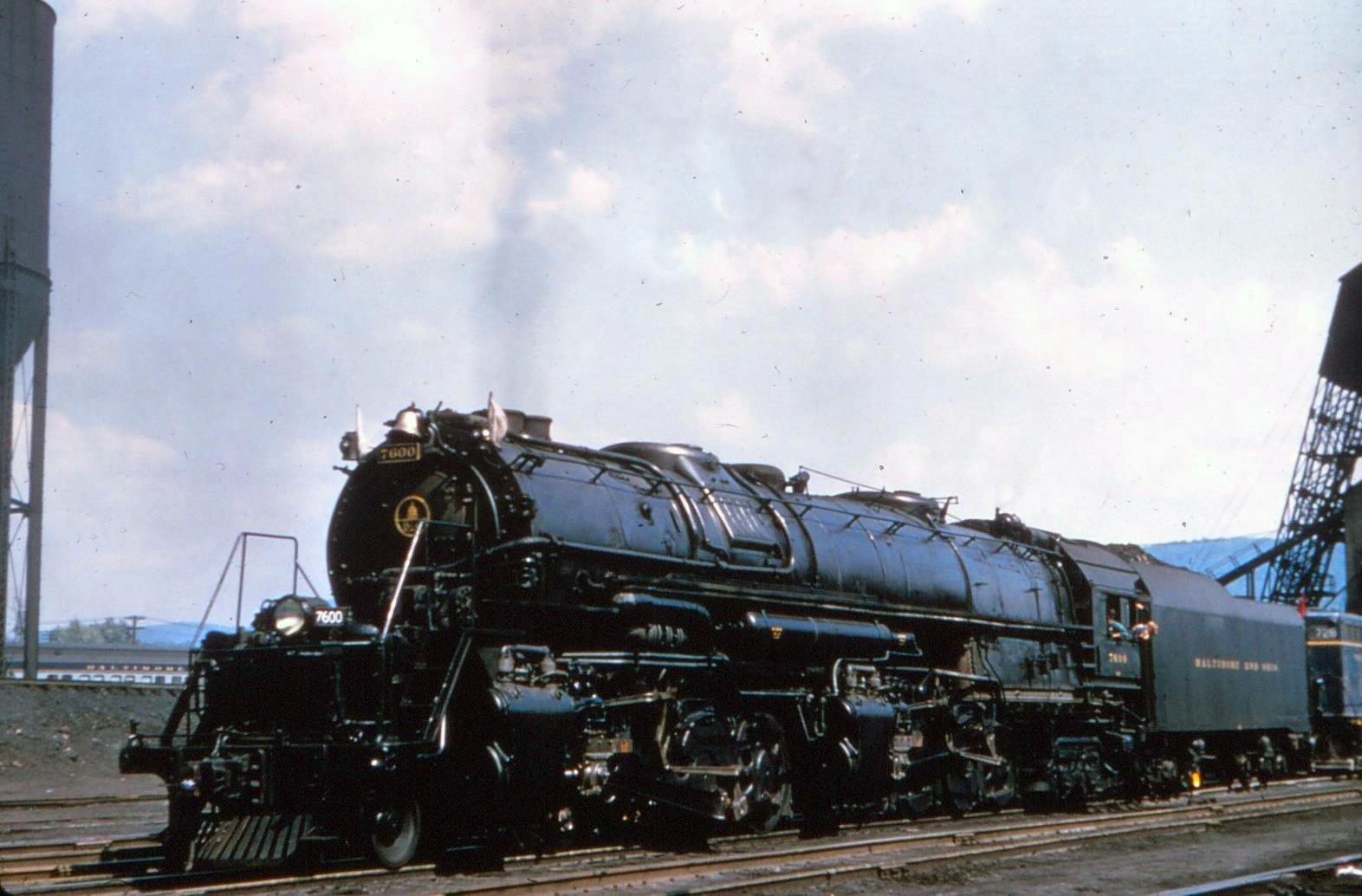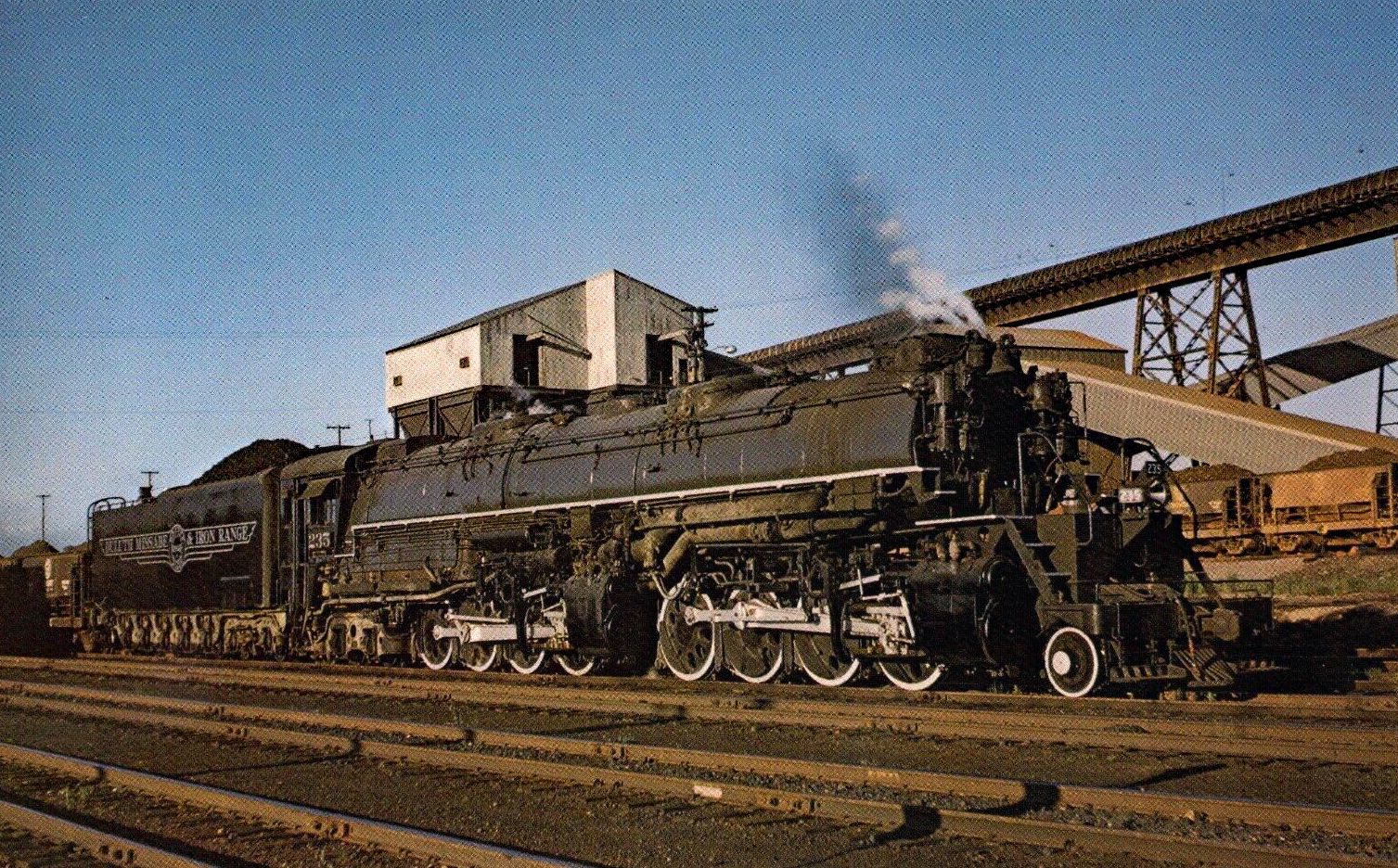The 2-8-8-4 "Yellowstone": A Late Era Design
Last revised: September 28, 2024
By: Adam Burns
The Yellowstone Type steam locomotive design, of the 2-8-8-4 wheel
arrangement and an articulated design featured many of the peak technological advances of the motive
power and being developed in the late 1920s had an extremely short
lifespan, as some Yellowstones were barely 10 years of age before being retired!
The 2-8-8-4's late development also meant that few, in comparison to other types, were ever built. In total 72 of these massive machines were manufactured for four different railroads: the Baltimore & Ohio; Duluth, Missabe & Iron Range Railway; Northern Pacific; and Southern Pacific.
The B&O would go on to own the most purchasing 30 of the locomotives in what would become their famous EM-1 class.
The railroad would have rather purchased diesels at the time but the big steamers proved adept in their assignment of moving heavy loads over stiff grades like Sand Patch. Today, just three of these magnificent locomotives are preserved.
 Duluth, Missabe & Iron Range 2-8-8-4 #230 steams southbound at Alborn, Minnesota with a heavy load of iron ore on May 17, 1959.
Duluth, Missabe & Iron Range 2-8-8-4 #230 steams southbound at Alborn, Minnesota with a heavy load of iron ore on May 17, 1959.The Yellowstone Type was also one of the longest steam locomotives ever built and could produce well over 6,000 hp in some classes.
While aesthetics usually matter little in over-the-road freight steamers, it is said that the B&O’s EM-1 class was perhaps the most beautiful Yellowstone with a somewhat streamlined tender and centered headlight.
The Yellowstone originally came about in 1928 when the Northern Pacific went looking for a steam locomotive capable of very high horsepower that could burn relatively low-grade coal found along its mainline (known as “Rosebud” coal).
Built by the American Locomotive Company, Alco, and designated Class Z-5 by NP, it produced less than desirable results at only around 5,000 hp due to its extremely large firebox.
After rectifying the problem by blocking off the first few feet of the firebox and the NP went on to order eleven more Yellowstones, which were built by Baldwin. As with the NP’s 2-8-8-4s, those ordered by Southern Pacific Railroad; Duluth, Missabe & Iron Range; and the Baltimore & Ohio were used in heavy-haul, heavy drag service.
The Southern Pacific employed theirs, classified as AC-9s and built by Lima, in the railroad’s southern regions where grades could be stiff but not brutal like in the Sierras (of note Espee’s famous Cab Forwards were essentially a backward facing Yellowstone and were used exclusively in the Sierras where the many tunnels and snow sheds could cause asphyxiation to train crews).
 Baltimore & Ohio 2-8-8-4 #7600 (EM-1), and GP7 #729, appear to be easing their way towards the roundhouse (just out of frame to the left) in Cumberland, Maryland during the early 1950's.
Baltimore & Ohio 2-8-8-4 #7600 (EM-1), and GP7 #729, appear to be easing their way towards the roundhouse (just out of frame to the left) in Cumberland, Maryland during the early 1950's.The DM&IR’s Yellowstones, classified as M-3s and M-4s and built by Baldwin (there was no difference in the two classes save for they were ordered at different times), were used primarily for the railroad’s heavy ore services that it was so well known for.
The latest built, Class M-4, were delivered in 1941 but survived barely twenty years before the final one was parked in 1961. Lastly, the B&O’s EM-1 Class was lucky to have been built at all. Thirty of these locomotives would be built and were delivered to the B&O (from Baldwin) at the end of World War II between 1944 and 1945.
One interesting note is that the B&O actually wanted and would have preferred newer diesel technology for this latest locomotive order and not steamers.
However, because the country was in the middle of WWII diesel-electric construction had been halted to focus on the war effort and was not available for purchase.
Likewise, the B&O (as did almost all of the railroads during this time) needed locomotives and lots of them to keep up with the blizzard of demand during wartime and so they settled on the next best thing, a well designed steam locomotive.
Railroads Operating 2-8-8-4 Yellowstones
· Baltimore & Ohio Railroad, Class EM-1: 30
· Duluth, Missabe & Iron Range Railway, Class M-3: 8
· Duluth, Missabe & Iron Range Railway, Class M-4: 10
· Northern Pacific Railway, Class Z-5: 12
· Southern Pacific Railroad, Class AC-9: 12
And well built the locomotive was. It had a rather low boiler pressure comparative to other models in its class but this low pressure had a great benefit, a high factor of adhesion (4.22).
This high ratio allowed the locomotive to start rather efficiently in that it was not as susceptible to wheel slippage as other designs. For instance, this added incentive was an extra benefit in the type of service the B&O originally designated the EM-1, the torturous grades of the railroad’s West End (its Cumberland Division), through the Appalachians.
The locomotive did a marvelous job at this, having little trouble hauling merchandise or coal drags over the steep climbs of Cranberry Grade, along the West Virginia/Maryland border, or over Sand Patch in Pennsylvania.
 Duluth, Missabe & Iron Range 2-8-8-4 #235 (M-4), manufactured by Baldwin in 1941, is resplendent in the setting sun of June 11, 1959. The big Yellowstone is about to depart Virginia, Minnesota with a heavy ore train bound for the ore docks along Lake Superior. Stan Kistler photo.
Duluth, Missabe & Iron Range 2-8-8-4 #235 (M-4), manufactured by Baldwin in 1941, is resplendent in the setting sun of June 11, 1959. The big Yellowstone is about to depart Virginia, Minnesota with a heavy ore train bound for the ore docks along Lake Superior. Stan Kistler photo.As you can see, all Yellowstones were built for essentially one reason, to move heavy traffic over steep grades as efficiently as possible.
And, even though the steamers would become the most technologically advanced ever developed they still could not reach the efficiencies of new diesel-electric technology and all were retired by 1960.
In any event, they did their duty quite well, so well in fact that the Denver & Rio Grande Western Railroad, upon borrowing a few from the DM&IR considered them the very best steam locomotives the railroad had ever operated! While not every class survives today a few have been preserved, including at least three of the DM&IR’s Yellowstones; 225, 227, and 229.
Recent Articles
-
Rio Grande 2-8-2 Locomotives (Class K-28): Specs, Roster, Photos
Apr 14, 25 10:24 PM
Rio Grande's Class K-28 Mikados were its newest narrow-gauge steam locomotives since the Mudhens of the early 1900s. Today, three survive. -
Rio Grande K-27 "Mudhens" (2-8-2): Specs, Roster, Photos
Apr 14, 25 05:40 PM
Rio Grande's Class K-27 of 2-8-2s were more commonly referred to as Mudhens by crews. They were the first to enter service and today two survive. -
C&O 2-10-4 Locomotives: Specs, Roster, Photos
Apr 13, 25 04:07 PM
Chesapeake & Ohio's T-1s included a fleet of forty 2-10-4 "Texas Types" that the railroad used in heavy freight service. None were preserved.


